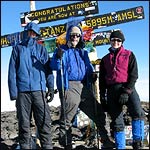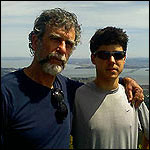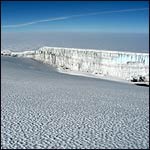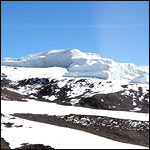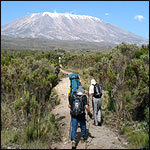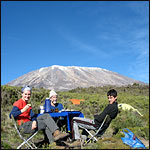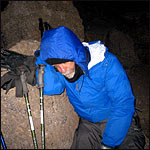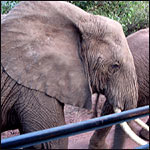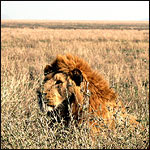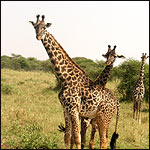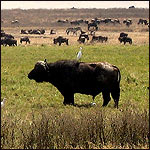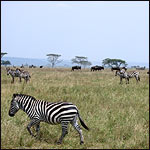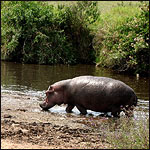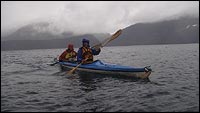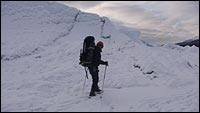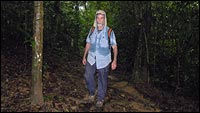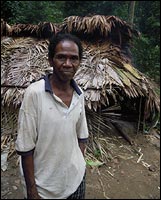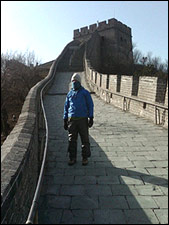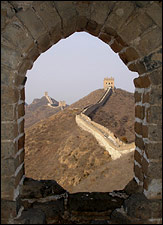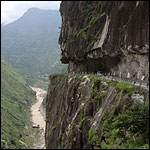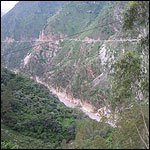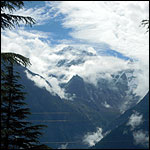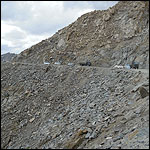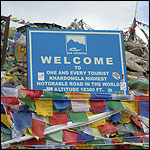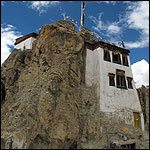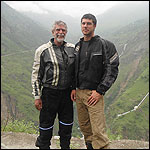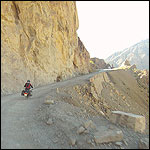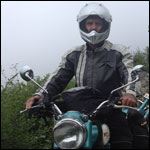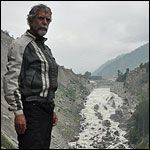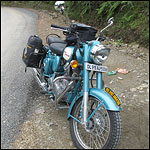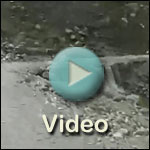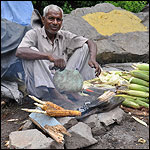By: Ofer Zur, Ph.D.
Summiting Kilimanjaro – The Roof Of The World
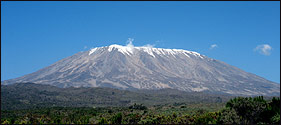
Having finished my book on Boundaries in Psychotherapy in early 2007, the perennial question, “What’s next for me?” returned. I had been searching for what gives me joy and meaning at this stage of my life. Watching the movie Motorcycle Diaries threw me deeper into an “existential funk” and further into questioning my calling. Upon reflection, I came up with two responses: The first is to go (part time) back to my old stomping grounds in Africa and see how I can apply myself for the good of humanity. Secondly, to challenge the boundary of air and oxygen by daring to climb with my son, age 14, and our very close family friend Sarah, 24, the awesome 19,300 feet of Mount Kilimanjaro in Tanzania, also known as the “Roof of Africa.” We left for our trip on June 13th, 2007 and took the Rongai (northern) Route over seven days. We followed the climb by going on Safari at the spectacular Serengeti and the Ngoro Ngoro game reserves. More about the trip
Click To Enlarge
Photos From Our Safari In Lake Manyara, Serengeti And Ngorongoro Creator
Backpacking on the Alaska Glaciers
Early in 2008 I was invited to give a keynote address at the Social Workers and Counselors annual convention in Anchorage, Alaska. It seemed like an opportunity not only to help psychotherapists in Alaska legitimize what they already know about flexible therapeutic boundaries but also for me to dare new types of boundaries. (See also my complete pictorial biography.) With the invitation to give the keynotes came the opportunity to dare new types of boundaries of extreme, life threatening cold. In my life I have neither gone downhill skiing nor spent much time in cold weather. The first encounter with the cold was kayaking in the beautiful and freezing October water off the tiny town of Wittier below the spectacular glacier-covered Chugach Mountains. It was cold and windy and the water was icy and choppy. It was not heart warming to learn that survival time in these frigid waters is only a few minutes. Then came the ultimate, thrilling climax of the trip, trekking-backpacking on the glacier. The idea of hiking and setting up tents on the glacier was as alluring as it was frightening. My guide (from AMS) and I backpacked onto the glacier at Matanuska Glacier. Within minutes of trekking onto the glacier we saw fresh huge footprints of a black bear. Unaccustomed to cold or the glacier environment, sleeping in a light tent on the glacier was as much of an emotional and even spiritual challenge as it was physical. As the temperature drops into the low teens, there are deep resounding cracks and the glacier radiates white light. Learning ice-climbing, self-arrest and glacier surviving techniques was actually fun and exhilarating.
Jungle Trekking In The Rainforest In Malaysia
With the invitation to present in Singapore in December 2009 on Internet Addiction came the opportunity of jungle trekking in nearby Malaysia. A several-hour boat ride up the river brought me to the remote town of Taman Negra. The night walk was fascinating, filled with jungle night sounds and a clear view of dozens of small nocturnal creatures such as spiders, bats, and zillions of noisy and equally colorful insects. Experiencing the ferocious monsoon rains and floods was new and awesome and so was the opportunity to visit the remote settlement of the aboriginal people, who still hunts with poison arrows. Before my trip my boys reminded me that “leaches suck.” Indeed they do. They also are known for their medicinal benefits.
The Great Wall Of China
I remain fascinated by boundaries of all kinds, so obviously my excitement peaked at having the opportunity to plant my feet on one of the most impressive physical boundaries, the Great Wall of China. The Wall stretches for over 5,000 miles through some of the most remote and treacherous mountains of China. Visiting the wall in December 2010 was a moving and freezing (10 degrees F) experience. Standing on the wall and looking North, I could easily imagine ferocious, nomadic Mongolian horsemen rapidly approaching, only to be stopped and deterred by the wall. Visiting some of the more remote parts of the wall in rural Northern China filled me with a deep sense of awe at the enormity and enduring parts of the construction and reconstruction. Walls have been effective throughout the history of humankind in separating warring parties, reducing hostility, and often bringing peace. The Berlin Wall separated the two Germanys very well and was dismantled when the time was ripe for reconciliation. The Roman Empire was equally well-protected from the Barbarians by the Roman Limes. Other effective walls include those between the Greeks and the Turks in Cyprus, the Protestants and Catholics in Ireland, and the grim DMZ between North and South Korea. As among communities, friends, family members, lovers, and therapists with clients it is important to know when to erect boundaries and when to fold them. It is essential to determine how high and wide to build them, and how to reduce or dismantle them at the right time. As with the Great Wall of China, this is an evolving, de-evolving, and re-evolving developmental process that demonstrates the importance of keeping boundaries appropriate, effective, constructive, and ever-changing.
Himalayas On Motorcycles…
Watching the “Highest Pass” inspired me to explore the highest ‘ridable’ road on earth at 18,380 ft. in the Himalayas with my son, Eitan Zur (19), on … motorcycles. It was an incredible experience of beauty, awe, physical and mental challenges, collaborations, care, love, mastery of fears and, once again, facing death straight in the eyes, or at least around endless blind corners and inches away from 5,000 ft drops.
I am savoring the amazing experiences of all the above adventures while staying open and intrigued with the possibility of the next challenging opportunity to grow, learn, and experience life at its fullest.
